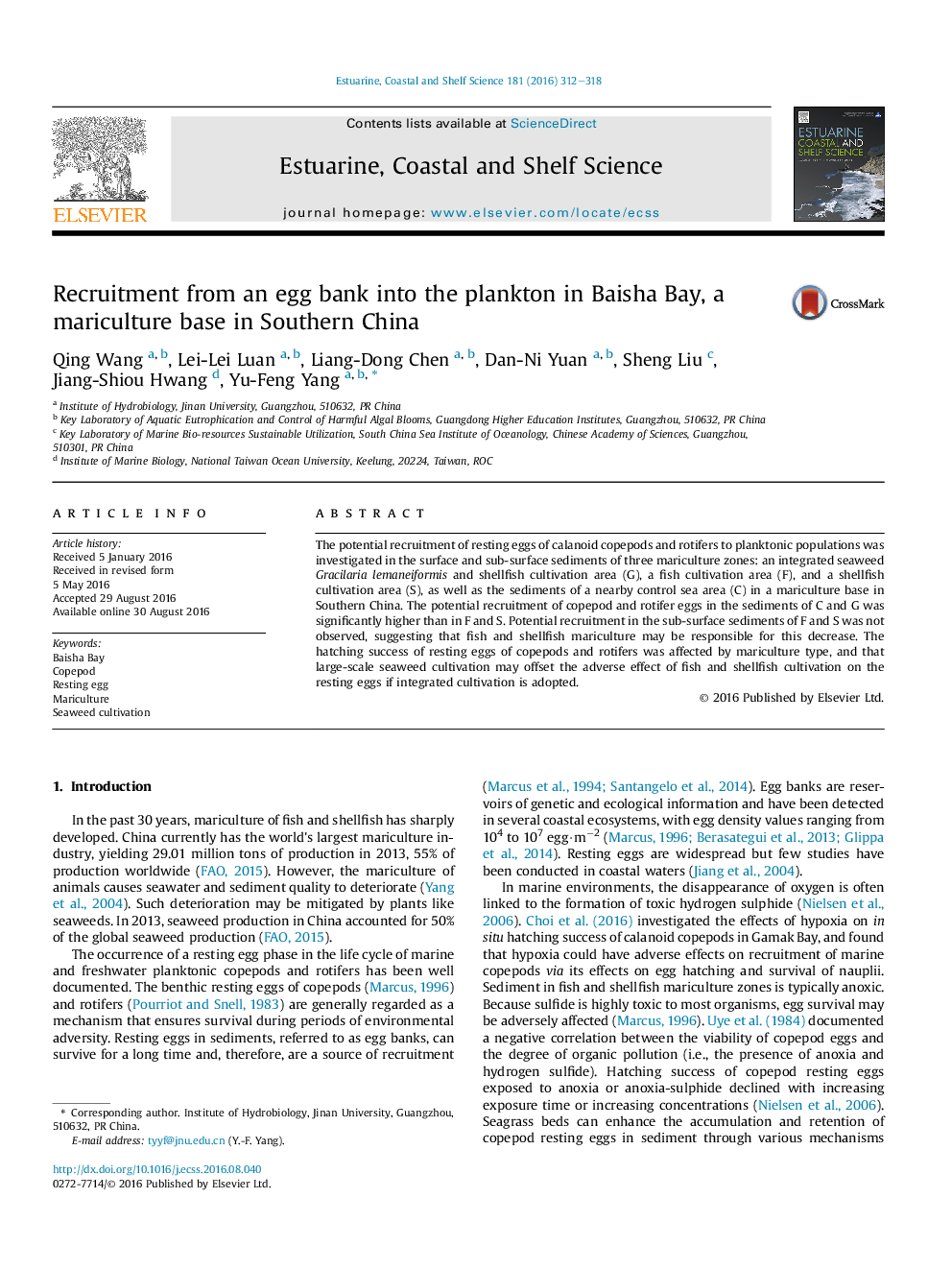| Article ID | Journal | Published Year | Pages | File Type |
|---|---|---|---|---|
| 4539150 | Estuarine, Coastal and Shelf Science | 2016 | 7 Pages |
The potential recruitment of resting eggs of calanoid copepods and rotifers to planktonic populations was investigated in the surface and sub-surface sediments of three mariculture zones: an integrated seaweed Gracilaria lemaneiformis and shellfish cultivation area (G), a fish cultivation area (F), and a shellfish cultivation area (S), as well as the sediments of a nearby control sea area (C) in a mariculture base in Southern China. The potential recruitment of copepod and rotifer eggs in the sediments of C and G was significantly higher than in F and S. Potential recruitment in the sub-surface sediments of F and S was not observed, suggesting that fish and shellfish mariculture may be responsible for this decrease. The hatching success of resting eggs of copepods and rotifers was affected by mariculture type, and that large-scale seaweed cultivation may offset the adverse effect of fish and shellfish cultivation on the resting eggs if integrated cultivation is adopted.
